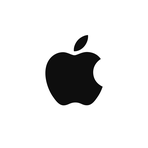Apple’s New Tools and Tethered Innovations: A Deep Dive into iOS 18 and iPhone 16
September 12, 2024, 11:06 pm
Apple is a titan in the tech world. Its latest updates, iOS 18 and the iPhone 16 series, showcase a blend of innovation and continuity. The company has a knack for making waves, but sometimes those waves are more like ripples. Let’s break down what’s new and what’s still stuck in the past.
First, let’s talk about the Repair Assistant in iOS 18. This tool is a game changer. It’s like a mechanic’s manual for your iPhone. After a repair, it ensures that everything is in sync. Think of it as a conductor tuning an orchestra. The display, battery, and other components can be calibrated to work seamlessly. True Tone and automatic brightness adjustments are now under your control.
Imagine replacing a car part without knowing if it fits. That’s how users felt before this tool. Now, with the Repair Assistant, users can breathe easy. If a part is installed before iOS 18, it will still show up for calibration. This feature is available for iPhone 12 and newer models. It’s a nod to user empowerment. Apple is saying, “We trust you to fix your device.”
But there’s more. The Repair Assistant is just one piece of the puzzle. Apple is also opening the door to developers. With iOS 18.1, the company is allowing access to the NFC chip via the Secure Element. This is a significant shift. Developers can now create apps that utilize NFC technology. But there’s a catch. They need to sign agreements and pay fees. It’s a double-edged sword. Access is great, but it comes at a cost.
Now, let’s pivot to the iPhone 16 series. Apple has made a bold move by adopting USB-C. It’s a step into the future, but not without its drawbacks. The iPhone 16 and 16 Plus still operate at USB 2 speeds. That’s a sluggish 480 Mbps. In contrast, the iPhone 16 Pro and Pro Max can reach 10 Gbps. It’s like driving a sports car but only using the speed limit of a neighborhood street.
During the launch, Apple hinted at the capabilities of the A18 Pro chip. They painted a picture of speed and efficiency. But when you look closer, it’s a mirage. The iPhone 16 models don’t reflect the promised speed boost. They’re tethered to the same old limitations. The Lightning port, which has been a staple, still matches the USB 2 speed.
This inconsistency raises eyebrows. Why not unify the experience? Apple’s decision feels like a missed opportunity. The iPad Pro models, with their Thunderbolt capabilities, are light years ahead. They can handle data transfer speeds up to 40 Gbps. The iPhone 16 series, however, seems to be stuck in a time warp.
But let’s not forget the small wins. The new physical buttons on the iPhone 16 series are a welcome addition. They add a tactile element that many users crave. It’s a step away from the all-touch interface that can sometimes feel cold and uninviting.
And then there’s the new MagSafe charger. It’s a 25W powerhouse, designed to work with 30W power blocks. This is a smart move. Fast charging is essential in today’s fast-paced world. But again, the maximum power is only available with the iPhone 16 or 16 Pro. It’s a reminder that Apple likes to keep its best features exclusive.
In summary, Apple’s latest updates bring a mix of excitement and frustration. The Repair Assistant is a leap forward, empowering users to take control of their devices. But the iPhone 16 series leaves much to be desired. The USB-C implementation feels half-baked. It’s a step forward, but with one foot still in the past.
Apple is a master of marketing. They know how to create buzz. But as consumers, we must look beyond the shiny surface. The tools and features are impressive, but they must deliver on their promises.
As we move forward, the tech landscape will continue to evolve. Apple will remain a key player. But the question remains: will they keep pace with the demands of their users? Only time will tell. For now, we watch, we wait, and we hope for more than just incremental changes. The future is bright, but it needs to be faster.
First, let’s talk about the Repair Assistant in iOS 18. This tool is a game changer. It’s like a mechanic’s manual for your iPhone. After a repair, it ensures that everything is in sync. Think of it as a conductor tuning an orchestra. The display, battery, and other components can be calibrated to work seamlessly. True Tone and automatic brightness adjustments are now under your control.
Imagine replacing a car part without knowing if it fits. That’s how users felt before this tool. Now, with the Repair Assistant, users can breathe easy. If a part is installed before iOS 18, it will still show up for calibration. This feature is available for iPhone 12 and newer models. It’s a nod to user empowerment. Apple is saying, “We trust you to fix your device.”
But there’s more. The Repair Assistant is just one piece of the puzzle. Apple is also opening the door to developers. With iOS 18.1, the company is allowing access to the NFC chip via the Secure Element. This is a significant shift. Developers can now create apps that utilize NFC technology. But there’s a catch. They need to sign agreements and pay fees. It’s a double-edged sword. Access is great, but it comes at a cost.
Now, let’s pivot to the iPhone 16 series. Apple has made a bold move by adopting USB-C. It’s a step into the future, but not without its drawbacks. The iPhone 16 and 16 Plus still operate at USB 2 speeds. That’s a sluggish 480 Mbps. In contrast, the iPhone 16 Pro and Pro Max can reach 10 Gbps. It’s like driving a sports car but only using the speed limit of a neighborhood street.
During the launch, Apple hinted at the capabilities of the A18 Pro chip. They painted a picture of speed and efficiency. But when you look closer, it’s a mirage. The iPhone 16 models don’t reflect the promised speed boost. They’re tethered to the same old limitations. The Lightning port, which has been a staple, still matches the USB 2 speed.
This inconsistency raises eyebrows. Why not unify the experience? Apple’s decision feels like a missed opportunity. The iPad Pro models, with their Thunderbolt capabilities, are light years ahead. They can handle data transfer speeds up to 40 Gbps. The iPhone 16 series, however, seems to be stuck in a time warp.
But let’s not forget the small wins. The new physical buttons on the iPhone 16 series are a welcome addition. They add a tactile element that many users crave. It’s a step away from the all-touch interface that can sometimes feel cold and uninviting.
And then there’s the new MagSafe charger. It’s a 25W powerhouse, designed to work with 30W power blocks. This is a smart move. Fast charging is essential in today’s fast-paced world. But again, the maximum power is only available with the iPhone 16 or 16 Pro. It’s a reminder that Apple likes to keep its best features exclusive.
In summary, Apple’s latest updates bring a mix of excitement and frustration. The Repair Assistant is a leap forward, empowering users to take control of their devices. But the iPhone 16 series leaves much to be desired. The USB-C implementation feels half-baked. It’s a step forward, but with one foot still in the past.
Apple is a master of marketing. They know how to create buzz. But as consumers, we must look beyond the shiny surface. The tools and features are impressive, but they must deliver on their promises.
As we move forward, the tech landscape will continue to evolve. Apple will remain a key player. But the question remains: will they keep pace with the demands of their users? Only time will tell. For now, we watch, we wait, and we hope for more than just incremental changes. The future is bright, but it needs to be faster.

